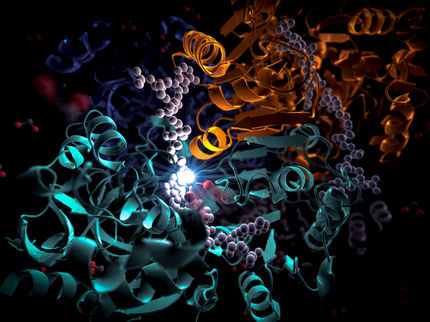Developing enzymes to clean up pollution by explosives
Advertisement
Scientists at the University of York have uncovered the structure of an unusual enzyme which can be used to reverse the contamination of land by explosives.
The discovery, by scientists in the York Structural Biology Laboratory and the Centre for Novel Agricultural Products, will support the development of plants that can help tackle pollution caused by royal demolition explosive, also known as RDX.
Researchers at York have identified bacteria that use RDX as a food source and used that knowledge to develop transgenic plants that can draw pollutants out of the soil and break them down.
The latest findings, published in the Journal of Biological Chemistry, focus on the XplA enzyme which plays an important role in that process.
Dr Gideon Grogan, from the York Structural Biology Laboratory, said: "The biological process for tackling the pollution caused by RDX already exists but we need to find ways of making it work faster and on the scale required.
"This research significantly improves our understanding of the structure of this enzyme and is therefore an important step towards exploiting its unusual properties."
Professor Neil Bruce, from the Centre for Novel Agricultural Products, said: "RDX is toxic and a possible carcinogen so it is important to identify ways of stopping it polluting land and water supplies.
"We have already had significant success in engineering plants that can perform this task and this research will help further refine that technique."
Most read news
Organizations
Other news from the department science

Get the chemical industry in your inbox
By submitting this form you agree that LUMITOS AG will send you the newsletter(s) selected above by email. Your data will not be passed on to third parties. Your data will be stored and processed in accordance with our data protection regulations. LUMITOS may contact you by email for the purpose of advertising or market and opinion surveys. You can revoke your consent at any time without giving reasons to LUMITOS AG, Ernst-Augustin-Str. 2, 12489 Berlin, Germany or by e-mail at revoke@lumitos.com with effect for the future. In addition, each email contains a link to unsubscribe from the corresponding newsletter.
































































